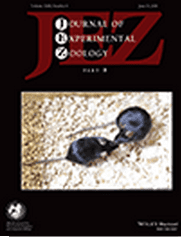JEZ-MDE:女性性高潮到底是怎么来的?
近日,一项刊登于国际杂志JEZ-Molecular and Developmental Evolution上的研究论文中,来自耶鲁大学和辛辛那提儿童医院的研究人员通过对母乳动物进行研究发现,女性的性高潮看似是房事给女性带来的欢愉,但实则其可以帮助促进排卵。
女性性高潮在人类生殖过程中并没有扮演任何明显的角色,其引起了很多学者,乃至研究者亚里士多德的兴趣,很多理论都想要去解释女性性高潮的起源,然而其中很多都重点关注于女性性高潮在人类和灵长类生物学中的角色及作用。如今在本文研究中,研究者通过对不同物种性高潮的进化特性进行研究给出了一种最新解释。
研究者Gunter Wagner教授表示,此前研究都趋向于从人类生物学中及修饰特性中寻找相关的证据,而不是从进化起源角度寻找线索,而在我们这项研究中,我们发现,进化出现女性性高潮的特点或许是诱导机体排卵的一种原始祖先的功能。目前在性高潮和后代数量或人类成功繁殖数量之间并没有明确的关联,科学家们也非常关注研究伴随女性性高潮的特殊生理学特性,即催乳素和催产素的神经内分泌排出,并且研究者还在其它的胎盘哺乳动物中寻找相应的生理学活性,最后他们发现,在很多哺乳动物机体中,这种反射作用在排卵过程中都扮演着重要角色。
尽管哺乳动物在生殖生物学上存在着巨大的多样性,但通过哺乳动物的进化就可以对部分核心的特性进行追踪,比如拿人类来讲,雌性的月经周期并不依赖于性活动,而在其它哺乳动物中,雌性的排卵往往是由雄性所诱导发生的,科学家们的分析结果表明,雄性诱导的排卵过程首先开始发生进化,而且周期性或自发排卵往往是后期进化产生的派生特征。
研究者表示,雌性性高潮或许可以进化成为直接扮演生殖角色的适应性机制,而这种生理性的反射反应就可以直接诱导排卵发生,当然这种反射对于进化后期的生殖过程来说就会变成不必要的,而性高潮的释放往往会扮演其它次要的角色。一项对雌性生殖器的比较研究结果表明,同自发性排卵(spontaneous ovulation)进化非常巧合的是,雌性生殖器中阴蒂往往也是迁移自祖先机体的特定位置,这种解剖学上的改变就会使得雌性在在性交过程中阴蒂并不太可能接受足够多的刺激从而引发性高潮的产生(神经内分泌的反射现象)。
最后研究者Pavlicev说道,在不同物种中同源性的特征通常很难鉴别,因为其在进化过程中会发生实质性地改变,我们认为机体荷尔蒙的飙升或许就可以表现出雌性性高潮的一种反应特征,而这或将帮助我们进一步深入追踪不同物种间这种特性的进化情况。诸如这样的进化改变被认为或许可以产生新的功能,比如科学家们已经建立的羽毛、头发及鱼鳔的功能等,其产生或许都为了一个目的,但后期研究者却发现了它们还具有其它功能。
The Evolutionary Origin of Female Orgasm
MIHAELA PAVLIČEV, GÜNTER WAGNER
The evolutionary explanation of female orgasm has been difficult to come by. The orgasm in women does not obviously contribute to the reproductive success, and surprisingly unreliably accompanies heterosexual intercourse. Two types of explanations have been proposed: one insisting on extant adaptive roles in reproduction, another explaining female orgasm as a byproduct of selection on male orgasm, which is crucial for sperm transfer. We emphasize that these explanations tend to focus on evidence from human biology and thus address the modification of a trait rather than its evolutionary origin. To trace the trait through evolution requires identifying its homologue in other species, which may have limited similarity with the human trait. Human female orgasm is associated with an endocrine surge similar to the copulatory surges in species with induced ovulation. We suggest that the homolog of human orgasm is the reflex that, ancestrally, induced ovulation. This reflex became superfluous with the evolution of spontaneous ovulation, potentially freeing female orgasm for other roles. This is supported by phylogenetic evidence showing that induced ovulation is ancestral, while spontaneous ovulation is derived within eutherians. In addition, the comparative anatomy of female reproductive tract shows that evolution of spontaneous ovulation is correlated with increasing distance of clitoris from the copulatory canal. In summary, we suggest that the female orgasm-like trait may have been adaptive, however for a different role, namely for inducing ovulation. With the evolution of spontaneous ovulation, orgasm was freed to gain secondary roles, which may explain its maintenance, but not its origin.
 此主题相关图片如下:1.png
此主题相关图片如下:1.png
